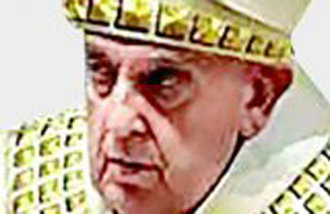More Banks Use Art to Entice Patrons
More Banks Use Art to Entice Patrons
Posted September. 30, 2006 04:19,
Gana Art Gallery opened its art gallery in Pyeongchang-dong, Jongno-gu, Seoul in 1998.
Pyeongchang-dong is a traditional posh village with high academic levels and home to many artists, and that is why the art gallery was opened there.
However, fewer-than-expected people turned up to observe artworks in the gallery. Rather, more people showed up in the restaurant and cafeteria than the art gallery itself.
What was the problem? director of Gana Art Gallery Kim Mi-ra thought. It was then when there was the gallerys encounter with a bank.
Art Gallery Meets a Bank
Pyeongchang-dong branch manager, Lee In-sun of Korea Exchange Bank (KEB) had a mini art gallery established in 80 pyeong (594 square meters) out of the total area of 180 pyeong (264 square meters). And then Lee went to Gana Art Gallery.
I will lend the exhibition space for free and connect you with prospective painting buyers. In return, Gana Art Gallery could pick out good pictures and display them.
So this is how the joint journey of the bank and the art gallery started
That was because they firmly believed that they could fill up the gaps by helping each other.
A bank branch has its competitiveness depended on how many VIPs they have acquired. However it was not easy for the Pyeongchang-dong branch to attract those with large assets. They were even tired of the branchs expensive interior decoration changes.
Branch manager Lee mulled over this issue for a while and came up with the idea of having an art gallery, even thinking of opening an exhibition in the bank branch. Meanwhile at that time the art gallery was finding it more and more difficult to attract rich customers who could easily afford paintings.
Director of Gana Art Gallery, Kim confessed, I had this feeling that if I explain little bit about at works to residents in Pyeongchang-dong, they would immediately fall in love with them. But I just didnt know how to kick this off It was then when the banks gesture turned out to be a great help.
Art Approaching Customers -
It was Kookmin Bank that first tried to make the bank meet an art gallery. From May last year, paintings and sculptures started to be on display in 16 Private Banking (PB) Centers nationwide.
Professional curators of art galleries selected appropriate artworks to be on display in the banks and rotated them every month or two. That is, some space for display as good as a permanent display center has been available for the bank branch.
Kookmin Bank even opened an artworks investment course for customers. Its intention is even to sell the displayed works as one of its strategies of asset management for customers.
It is Pyo Gallery that operated Kookmin Banks display and courses. The gallery sold 20 artworks via the bank up to August this year. Only 35 pieces were allowed to be on display on its display floor, but a total of about 250 pieces were up for display as the display space of 16 Kookmin Bank branches were used.
Recently even Shinhan Bank opened gallery banks along with three art galleries in nine of its PB Centers in the metropolitan area. Displayed and sold are the works of Koreas prestigious and master artists, and 10 percent of the sales earnings are said to be contributed to international aid agencies including UNICEF.
Even Artists Have Changed -
Such new display spaces encouraged artists to actively participate in these efforts.
Pyo Gallery holds Talks with Artists in a non-regular basis in PB Centers in Kookmin Bank amid heated participation of artists. That is because PB customers of the bank own financial assets worth at least hundreds of millions of won. They are the potential customers the art market targets.
Pyo Gallerys owner, Pyo Mi-sun said, PB Centers serve as a premium social club where artists meet customers that are usually hard to contact.
KEBs Pyeongchang-dong branch receives endless inquiry calls on young artists private exhibitions. Director Kim hinted, Young professional artists are more active in making their artistic world known to new customers.
sanhkim@donga.com
Headline News
- Korean president faces debate limitations unlike U.S. counterpart
- KEPCO's first quarter profits failed to meet market expectations
- Teenagers are left out of discussions about national pension
- 2 consultative bodies submit minutes regarding increasing number of medical students
- Woo Sang-hyuk's rivalry and friendship transcend borders







